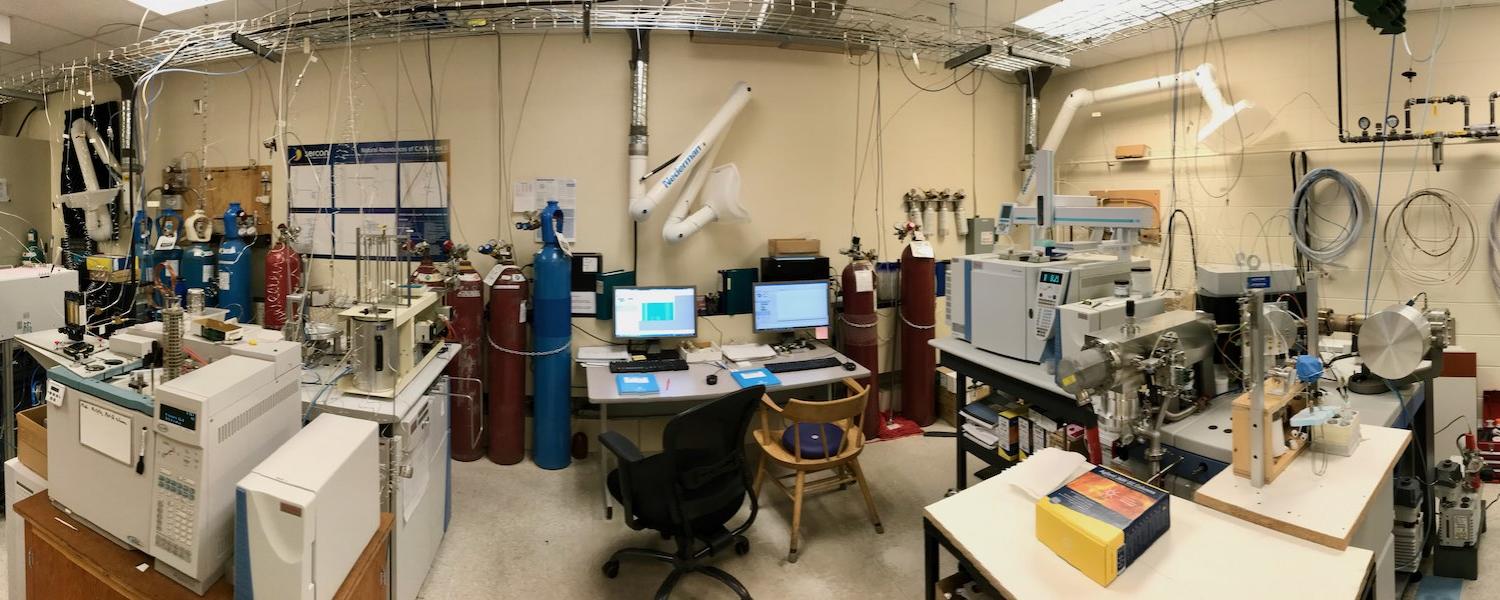
Isotope Science Lab
Instrumentation

Vathi (Thermo Finnigan Delta V)
This instrument is used for carbon, nitrogen, and sulfur isotope analysis of solid samples. The ISOTOPE Cube elemental analyzer peripheral uses a unique purge and trap method for N & C analysis of single samples. A Fisons NA1500 or Costech 4010 is used for the analysis of δ34S of inorganic materials (primarily BaSO4, Ag2S and sulfide mineral separates).
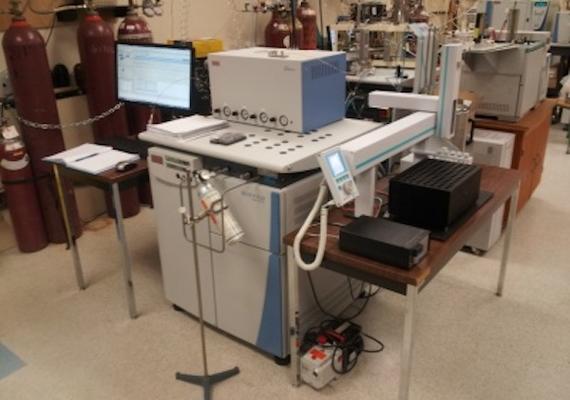
Kioni (Thermo Finnigan Delta V)
This multi purpose instrument has been setup to measure the stable isotopes of water, carbonate and dissolved inorganic carbon (DIC) using a THERMO Gasbench prep device. The stable isotopes of δ18O and δ2H of water are measured using head space equilibration. Carbon and oxygen isotope analysis of carbonates and DIC are measured using phosphoric acid digestion.
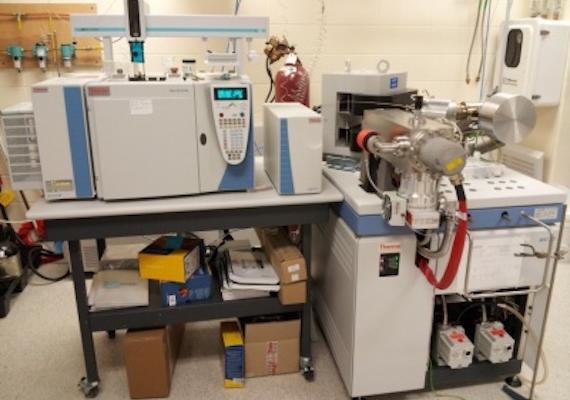
Quadra (Thermo Finnigan MAT 253)
This instrument is set up for compound specific carbon and hydrogen isotope analysis (e.g.: δ13C and δ2H of alkanes, δ13C and δ15N of amino acids and δ13C of CO2). In addition, a dual inlet sample introduction system allows for the analysis of gas samples purified offline.
Compound specific isotope analysis provides unique insights into elemental cycling and 'fingerprinting' in specific organic compounds. For carbon isotope analysis, gas samples are injected into the Trace GC where they are volatized, separated by gas chromotography before being combusted to CO2 in the high temperature furnace of the GC Isolink. The CO2 is then inlet to the mass spectrometer, via a ConfloIV interface, for δ13C measurement. Analysis of compound specific δ2H similarily involves injection of the gas sample into the Trace GC, volatization, GC separation but then convertion to H2 in the High Temperature Conversion (HTC) oven of the GC Isolink. The H2 is then inlet to the mass spectrometer, via a ConfloIV interface, for δ2H measurement.
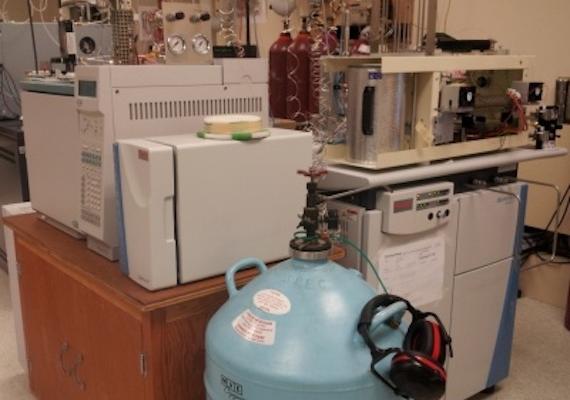
Pyro (Thermo Finnigan Delta V)
Used primarily for oxygen and nitrogen stable isotope analysis (SIA) of dissolved TON (Total Oxidized Nitrogen = nitrate + nitrite) using the denitrifier technique. Equipped with a custom autosampler, modified PreCon and HP 6890. Water samples are innoculated into a bacterial culture which consumes the TON and produces N2O(gas) (Sigman et. al., 2001 and Casciotti et. al., 2002). The resulting N2O(gas) is purified and concentrated in the PreCon system before being inlet to the mass spectrometer via a ConfloIV interface.

HEKAtech Oxygen Analyzer and Fisons NA1500 Elemental Analyzer
These two peripheral instruments are used to prepare solid samples for 18O and 34S stable isotope analysis (SIA) by High Temperature Conversion (HTC)-IRMS and Elemental Analysis (EA)-IRMS respectively. The HEKAtech Oxygen Analyzer uses high temperature thermal decompose to convert sample oxygen to CO(gas) for 18O-SIA. The Fisons NA1500 EA uses combustion elemental analysis to convert sulfides and inorganic sulfates to SO2(gas) for 34S-SIA.
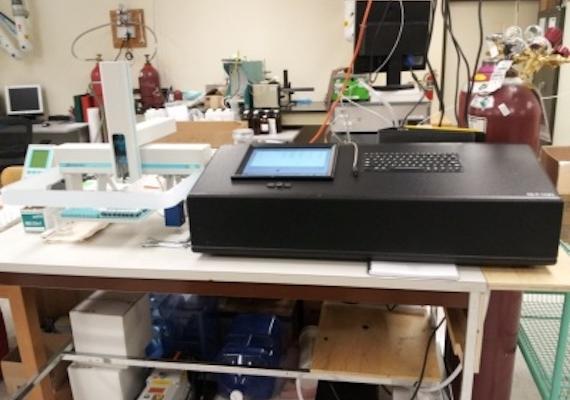
Los Gatos Research Water Isotope Analyzer
This laser based instrument is used for hydrogen and oxygen isotope analysis of waters. The instrument uses the Cavity-Ringdown Spectroscopy (CRDS) technique to determine the isotopic composition spectroscopically as opposed to traditional mass spectrometry.

Thermo GALLERY Discrete Analyzer
Designed to increase efficiency for photometric (colorimetric and enzymatic) and electrochemical (pH and conductivity) analysis, the Thermo Scientific™ Gallery™ Discrete Analyzer provides fast, reproducible results in a compact, benchtop design.
